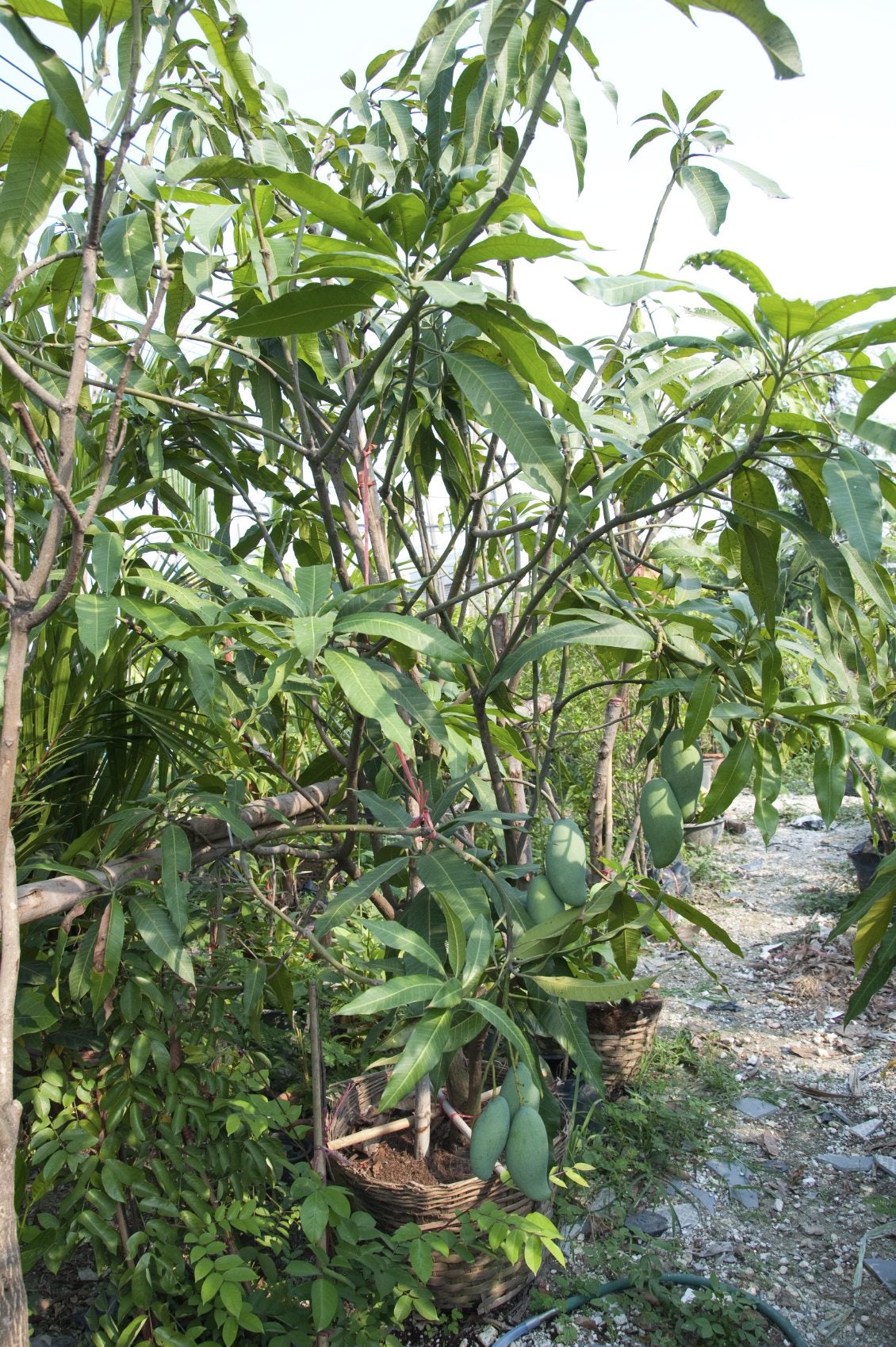
Fruit trees are generally pruned to remove dead or diseased wood, allow more light to penetrate into the leaf canopy, and control the overall tree height to improve harvesting. Pruning mango trees is no exception.
Sure, you could let them run amok, but you would need significant space for such a large tree and how on earth would you get to the fruit? So how do you prune a mango tree and when is the best time to prune a mango tree? Read on to learn more.
Before Trimming Mango Trees
On a cautionary note, mangos contain urushiol, the same chemical that poison ivy, poison oak, and sumac contain. This chemical causes contact dermatitis in some people. Since urushiol is also present in the mango leaves, care should be taken to completely cover exposed body parts when pruning mango trees.
Also, if you have a mango that’s in dire need of pruning because it has been left to run amok, say it’s 30 feet (9 m.) or taller, a trained arborist who is licensed and insured should be called upon to do the job. If you decide to do the work yourself, the following information will give you a rudimentary mango pruning guide.
Mango Pruning Guide
About 25-30% of moderate pruning is done on commercially grown mangos to reduce the canopy height and width of large mango trees. Ideally, the tree will be shaped to have three and not more than four main trunks, have ample interior canopy space, and is 12-15 feet (3.5-4.5 m.) tall.
All this is true for the home gardener as well. Moderate, and even severe pruning, will not damage the tree, but it will reduce production for one to several seasons, though is worth it in the long run. Spreading branches are more fruitful than erect branches, so pruning seeks to remove them. Lower branches are also pruned to four feet from ground level to ease the tasks of weed removal, fertilizer application, and watering.
The basic idea is to maintain a modest height and improve flowering, thus fruit set. Mangoes do not need to be pruned every year. Mango trees are terminal bearers, which means they flower from the tips of the branches and will only flower on mature wood (shoots that are 6 weeks or older).
Sign up for the Gardening Know How newsletter today and receive a free copy of our e-book "How to Grow Delicious Tomatoes".
You want to avoid pruning when the tree has vegetative flushes near flowering time around the end of May and into June. The best time to prune a mango tree is after harvest and should be done immediately, at the very least completed by the end of December.
How Do You Prune a Mango Tree?
Most times, trimming mango trees is just common sense. Keep in mind the goals to remove diseased or dead wood, open the canopy, and reduce height for ease of harvest. Pruning to maintain height should begin when the tree is in its infancy. First, a heading cut (a cut made in the middle of a branch or shoot) should be made at about 3 inches (7.5 cm.). This will encourage the mango to develop the main three branches which form the scaffold of the tree.
When those scaffold branches grow to 20 inches (50 cm.) long, a heading cut should again be made. Each time the branches reach 20 (50 cm.) inches in length, repeat the heading cut to encourage branching. Remove vertical branches in favor of horizontal branches, which help the tree to maintain its height. Keep pruning in this manner for 2-3 years until the tree has a strong scaffold and open frame.
Once the tree is at a workable height for you, you should only need to make one to two thinning cuts per year just to help control growth. Keep the tree rejuvenated and fruitful by removing any woody branches. Mangoes will begin fruiting in their second or third year after planting.
Once the tree is fruiting, it uses less energy to grow and more to blossom and fruit, effectively reducing its vertical and horizontal growth. This will reduce the amount of pruning you need to focus on. Just maintenance pruning or pinching should keep the tree in good shape.

Amy Grant has been gardening for 30 years and writing for 15. A professional chef and caterer, Amy's area of expertise is culinary gardening.
